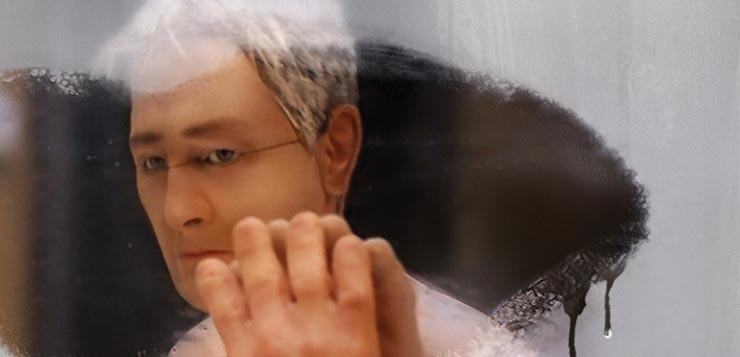Film critics, writers, and moviegoers often wonder what the heck goes on in the mind of Charlie Kaufman. “Anomalisa” may be a good starting point.
Teaming up with director Duke Johnson, Kaufman adapts a play he wrote that was performed in 2005. “Anomalisa” follows Michael Stone (David Thewlis), a customer service motivational speaker on an over-night business stay. Unlike any of his other films, this stop-motion animation features a 24-hour story unraveling the isolation and social disillusionment of perceptual relationships through Michael’s interactions.
The DePaulia sat down with the directing duo Charlie Kaufman and Duke Johnson on behalf of their new film that releases in theaters this week. “Anomalisa” stars Jennifer Jason Leigh, David Thewlis, and Tom Noonan.
How has your directing career transpired from your debut of “Synecdoche, New York” (2008) until now?
Charlie Kaufman: I got to film school and was going to be a director. That was my goal. It was just a kind of circuitous way that I got there. I figured I’d get into it by writing and movies and that didn’t work. So I got into it by writing TV and then got to writing movies and then eventually it got me to directing. I like directing. It’s exciting; it’s fun, its social. It’s different from writing, which is none of those things. It’s a nice break for me to do it. I intend to continue doing it as long as someone will let me.
There were a lot of intimate scenes and a lot of slow camera movements in the film that can cause a wide variety of reactions among audiences. What were some of the emotions that you were trying to evoke?
Duke Johnson: Those were dollies. It’s much easier to do a zoom in and a zoom out in stop motion. We really wanted to be able to make it cinematic and do what they do in live action film. It’s challenging in stop motion because the camera is animating one frame at a time in sync with the animation, which is super complicated. As the camera is shifting, it’s changing the perspective of the puppets.
We felt the practical move would immerse you in the space and in the world because you get that perspective shift. With the subtle, slow moves, the intention was to draw you into the characters emotional space without you being overly aware of the camera swooping around. You’re sort of being gradually pulled into the scene. It (camera movements) creates an emotional sense of vulnerability, camera moves are meant to be felt instead of outwardly noticed.
Did you guys have conflict working together? What was the most common?
DJ: Lunch. What to order for lunch.
CK: We always put it (lunch) on the editor. We had disagreements, but for the most part they were minor and they were always resolved. It was a very harmonious relationship, which was kind of lucky because we didn’t know each other before at all. We were just thrown into this situation together. We got a long really well. What was the most common conflict?
DJ: There was never any reoccurring type of conflict.
CK: We had a very similar sensibility and so much of the stuff was decided so early in terms of style and tone. It was sort of implemented after that it was more of a job.
The film generates a lot of dialogue about isolation. How was it writing the script and trying to portray that? How did you follow through during directing?
CK: I originally wrote it as a play. It was performed in 2005 with the same actors. I don’t think it was that difficult for me to write it, maybe I’m just very comfortable with that particular area of exploration. I came across this thing called the Fregoli delusion, which is a syndrome in which you think everybody else in the world is the same person. I thought that was a nice metaphor for it. I was looking for a way to use one actor to portray a lot of characters. It sort of just fell into place. With that notion, the idea that someone hears only one voice fell into place, not in a clinical sense but in a thematic sense.
DJ: Illustrating those directorially, visualizing that concept is just using depth of field and lighting to support the characters state of mind and his isolation.


